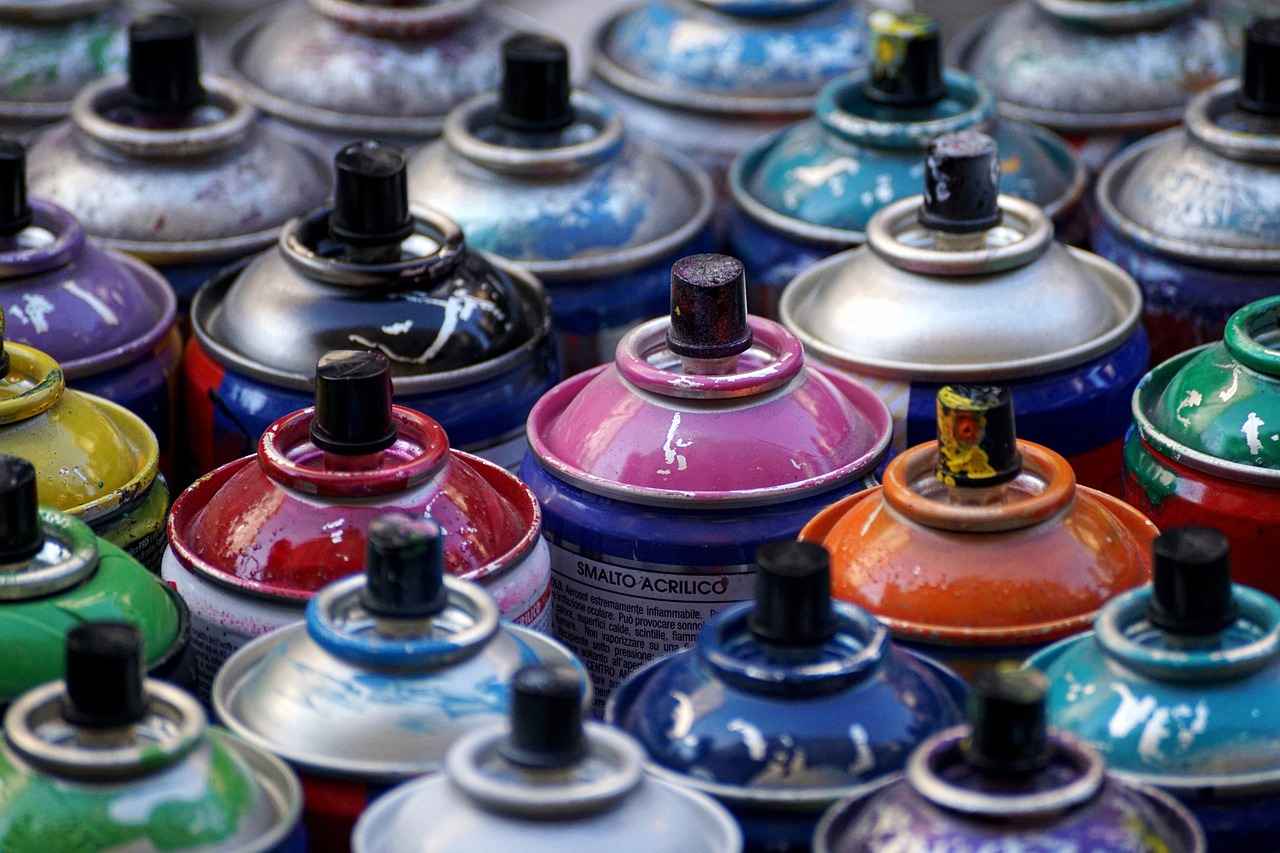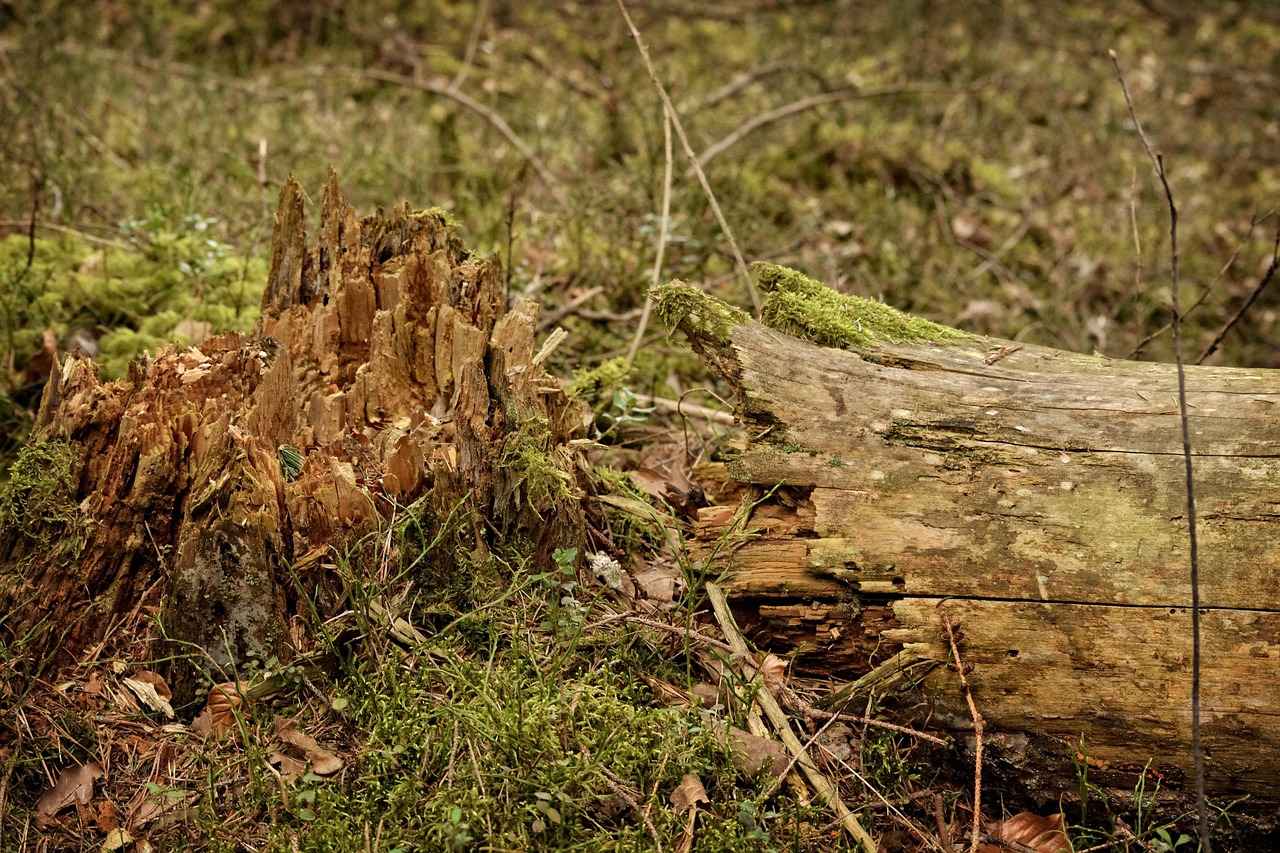This article serves as a comprehensive guide on the critical process of safely stripping lead paint. It outlines effective methods, essential safety precautions, and best practices to ensure a secure and efficient removal process.
Lead paint, commonly found in homes built before 1978, poses serious health risks. Lead exposure can result in neurological damage, developmental delays in children, and various health issues in adults. Understanding these dangers is vital for anyone involved in home renovation or maintenance.
Identifying lead paint is the first step in ensuring safety. Homeowners can utilize several methods to determine the presence of lead in paint.
Lead test kits are an accessible and effective option for homeowners. These kits provide quick results and are user-friendly, making them ideal for preliminary assessments.
- Swab Tests: Quick and easy to use, these kits can detect lead on surfaces.
- Paint Chip Tests: These involve sending paint samples to a laboratory for detailed analysis.
Understanding how to interpret the results from lead test kits is crucial. Knowing the levels of lead can help determine the necessary steps for remediation.
For a more thorough assessment, hiring a certified professional is advisable. They can conduct comprehensive testing and provide guidance on lead paint removal.
Safety precautions are paramount when stripping lead paint. Adhering to proper protective gear and protocols can significantly minimize exposure and health risks during the process.
Wearing appropriate PPE is critical. This includes respirators, gloves, and protective clothing to shield against lead dust and particles.
Setting up a safe workspace is essential. This involves sealing off areas and using containment methods to prevent lead contamination in other parts of the home.
There are several effective methods for stripping lead paint. Each method has its pros and cons, and the choice often depends on the specific circumstances of the project.
Mechanical stripping involves using tools like scrapers and sanders. While effective, this method can generate lead dust, necessitating additional safety measures.
Chemical strippers can be a safer alternative, as they minimize dust generation. However, it’s essential to choose lead-safe products and follow application instructions carefully.
Disposing of lead paint waste correctly is crucial to prevent environmental contamination. There are specific regulations and guidelines that must be followed.
Each region has its regulations regarding the disposal of lead waste. Homeowners should familiarize themselves with local laws to ensure compliance.
Utilizing designated hazardous waste facilities is the safest method for disposing of lead paint. This prevents lead from entering landfills and harming the environment.
In some cases, it may be necessary to seek professional help for lead paint removal. Understanding when to call in experts can ensure safety and compliance with regulations.
If the lead paint is extensive or if you’re unsure about the safety measures, hiring professionals can provide peace of mind and expertise.
Selecting a certified contractor ensures that the removal process adheres to safety standards. Look for professionals with experience and proper certifications in lead paint remediation.

What is Lead Paint and Why is it Dangerous?
Lead paint, a common feature in homes built before 1978, poses significant health risks, particularly to young children and pregnant women. Understanding the nature of lead paint and its associated health risks is crucial for anyone dealing with older homes. Lead is a toxic metal that can cause severe health issues when ingested or inhaled, leading to a variety of complications.
Lead exposure can lead to neurological damage, developmental delays, and behavioral problems, especially in children. Even low levels of lead in the blood can affect a child’s IQ and ability to pay attention. In adults, lead exposure can result in high blood pressure, kidney damage, and reproductive issues. The dangers of lead paint are particularly concerning because symptoms of lead poisoning may not appear until significant damage has already occurred.
Even though lead paint was banned in residential properties in the United States in 1978, many older homes still contain it. As these homes age, the paint can chip, crack, or deteriorate, releasing lead dust and particles into the air. This dust can be easily inhaled or ingested, especially by children who are more likely to put their hands or objects in their mouths. Understanding the ongoing risks associated with lead paint is essential for maintaining a safe living environment.
Identifying lead paint is the first step in ensuring safety. Homeowners can use various methods, including:
- Lead Test Kits: These kits can provide quick results and are easy to use, making them ideal for preliminary assessments.
- Professional Inspection Services: For a more thorough assessment, hiring a certified professional can ensure accurate testing and safety compliance.
Recognizing the symptoms of lead poisoning is crucial for early intervention. Common signs include:
- In Children: Developmental delays, learning difficulties, irritability, and loss of appetite.
- In Adults: Fatigue, headaches, memory problems, and mood disorders.
Safety precautions are paramount when handling lead paint. This includes:
- Wearing Personal Protective Equipment (PPE): Use respirators, gloves, and protective clothing to shield against lead dust.
- Creating a Safe Work Environment: Seal off areas and use containment methods to prevent lead contamination in other parts of the home.
In summary, understanding the dangers associated with lead paint is essential for anyone living in or renovating older homes. Awareness of the risks, symptoms of lead poisoning, and the importance of safety precautions can help protect you and your family from the harmful effects of lead exposure.

How to Identify Lead Paint in Your Home?
Identifying lead paint is a critical step in ensuring the safety of your home, especially if it was built before 1978 when lead-based paints were banned for residential use in the United States. The presence of lead in paint can pose serious health risks, particularly to young children and pregnant women. Understanding how to identify lead paint can help you take the necessary precautions to protect your family and home.
Homeowners have several options to determine if lead paint is present in their homes. Here are some of the most effective methods:
- Lead Test Kits: These kits are widely available at hardware stores and online. They typically include swabs that change color in the presence of lead. Using a lead test kit is a quick and cost-effective way to assess your paint.
- Laboratory Testing: For a more accurate result, you can send paint samples to a certified laboratory. This method is more expensive but provides detailed information about lead content.
- Visual Inspection: Although not definitive, a visual inspection can help identify areas of concern. Look for chipping or peeling paint, especially in homes built before 1978.
Lead test kits are designed to be user-friendly. Here’s how they generally work:
- Preparation: Start by cleaning the area where you suspect lead paint. This ensures that any contamination does not affect the test results.
- Applying the Test: Follow the instructions provided with the kit. Typically, you will rub a swab on the paint surface.
- Interpreting Results: After a few minutes, check the color of the swab. If it changes to the indicated color for lead, it suggests the presence of lead in the paint.
While lead test kits are convenient, they do have limitations:
- False Positives: Some kits may produce false positives, meaning they indicate the presence of lead when there is none.
- Surface Testing Only: Most kits only test the surface layer of paint, so they may not detect lead deeper within layers of paint.
If you suspect extensive lead paint in your home or if your test kit indicates a positive result, it may be time to seek professional help. Certified lead inspectors can provide a thorough assessment and recommend appropriate remediation strategies.
Identifying lead paint is essential for several reasons:
- Health Risks: Lead exposure can lead to serious health issues, including developmental delays in children and various health problems in adults.
- Legal Requirements: Homeowners may be legally obligated to disclose the presence of lead paint when selling their property.
- Informed Remediation: Knowing whether you have lead paint allows you to take informed steps towards safe removal or encapsulation.
In conclusion, identifying lead paint in your home is the first step toward ensuring safety and compliance with health regulations. Using lead test kits, conducting visual inspections, and seeking professional help when necessary can help protect your family from the dangers of lead exposure.
Using Lead Test Kits
is a crucial step for homeowners concerned about lead exposure in their properties. These kits offer a practical and efficient way to assess the presence of lead in paint, ensuring the safety of your living environment.
Lead test kits are designed to be user-friendly, allowing homeowners to conduct preliminary assessments without the need for professional assistance. The convenience of these kits means that anyone can quickly check for lead, making them an accessible option for many. Most kits provide results in a matter of minutes, which is essential for those needing immediate information about their home’s safety.
- Swab Tests: These kits typically include a chemical swab that changes color upon contact with lead. They are straightforward to use and provide quick results.
- Paint Chip Tests: Homeowners can send paint samples to a laboratory for detailed analysis. This method is more accurate but requires more time and effort.
- Electronic Lead Testers: These devices provide instant results and can be reused multiple times, making them a cost-effective option for regular monitoring.
To ensure accurate results, it is essential to follow the instructions provided with the lead test kit carefully. Here are some key steps:
- Preparation: Before testing, ensure the surface is clean and dry. Remove any dust or debris that could interfere with the test.
- Application: Apply the test according to the kit’s instructions, whether it’s swabbing a surface or taking a paint chip sample.
- Result Interpretation: After the specified waiting period, check the results. Most kits will provide a clear indication of whether lead is present.
Understanding the results from your lead test kit is vital. If the test indicates the presence of lead, it is crucial to take immediate action. This may include:
- Consulting Professionals: If lead is detected, consider hiring a certified lead abatement contractor to assess the situation and recommend remediation strategies.
- Implementing Safety Measures: If you choose to handle the situation yourself, ensure you have the proper safety gear and follow guidelines for lead paint removal.
While lead test kits are a valuable tool, they are not infallible. Factors such as user error, environmental conditions, and the age of the kit can affect accuracy. Therefore, if you receive a positive result, it is advisable to confirm it through professional testing.
In conclusion, using lead test kits is an essential practice for homeowners who wish to ensure their living spaces are free from lead hazards. By understanding the types of kits available, how to use them effectively, and interpreting the results correctly, you can take proactive steps to protect your family’s health.
Types of Lead Test Kits
When it comes to testing for lead in paint, homeowners have a variety of options at their disposal. Understanding the different available is essential for making informed decisions about safety and remediation. In this section, we will explore the two primary types of lead test kits: swab tests and paint chip tests, along with their respective advantages and limitations.
Swab tests are one of the most popular methods for detecting lead in paint. These kits typically come with a swab that is moistened with a chemical reagent. When the swab is rubbed on a painted surface, it changes color if lead is present. Here are some key points about swab tests:
- Advantages:
- Quick results, often within minutes.
- Easy to use, making them suitable for non-professionals.
- Portable and convenient for testing multiple areas.
- Limitations:
- May provide false positives or negatives if not used correctly.
- Limited to surface testing; cannot assess deeper layers of paint.
Paint chip tests involve collecting a sample of paint from a surface and sending it to a laboratory for analysis. This method is often considered more reliable than swab tests. Here are some important aspects:
- Advantages:
- Provides accurate and detailed information about lead content.
- Can test multiple layers of paint, giving a comprehensive overview.
- Laboratory analysis minimizes the risk of user error.
- Limitations:
- Results take longer, usually several days to weeks.
- Requires more effort to collect samples and send them for testing.
- Potentially higher cost due to laboratory fees.
Choosing the right lead test kit depends on various factors, including the age of your home, your budget, and how thorough you want the testing to be. For quick assessments, swab tests may suffice, while paint chip tests are recommended for more accurate and in-depth analysis. It’s crucial to follow the manufacturer’s instructions for whichever test you choose to ensure reliable results.
In conclusion, understanding the differences between swab tests and paint chip tests is vital for homeowners concerned about lead exposure. Each method has its unique advantages and limitations, and the choice should align with your specific needs and circumstances. Always prioritize safety and consider seeking professional assistance if you’re unsure about the testing process or the results obtained.
Interpreting Test Results
Understanding how to interpret the results from lead test kits is essential for any homeowner concerned about lead exposure. Proper interpretation of these results can significantly influence the necessary steps for remediation and ensure a safer living environment.
Lead test kits provide valuable information regarding the presence and concentration of lead in your home. Knowing the levels of lead can help determine whether immediate action is required or if further testing is needed. High levels of lead can pose serious health risks, particularly to children and pregnant women, making it crucial to understand the implications of the results.
Lead test kits typically categorize results into ranges, such as:
- Safe Levels: Generally considered to be below 5 micrograms per deciliter (µg/dL). If your results fall into this category, immediate remediation may not be necessary.
- Moderate Levels: Results between 5 and 20 µg/dL may indicate the need for further testing and potential remediation efforts. Consult local guidelines for specific actions.
- High Levels: Results above 20 µg/dL require urgent attention. It is advisable to seek professional assistance to address the lead contamination.
Once you receive your test results, follow these recommended steps:
- Verify the Results: If you receive a positive test result for lead, consider conducting a second test or hiring a professional for confirmation.
- Assess the Area: Identify where the lead is present—whether in paint, dust, or soil—and evaluate the extent of the contamination.
- Consult Professionals: For moderate to high levels of lead, contacting certified lead abatement professionals is crucial. They can provide a comprehensive assessment and remediation plan.
- Implement Remediation: Follow through with the recommended remediation steps, which may include safe removal of lead paint or encapsulation methods.
Many homeowners may believe that a single test is sufficient to determine lead levels throughout their property. However, lead can be found in various locations and forms, necessitating multiple tests in different areas. Furthermore, some might assume that lead dust is not a concern if paint is intact, but lead dust can still pose a significant risk, especially if disturbed.
After remediation, it’s essential to regularly monitor lead levels to ensure safety. Consider implementing the following practices:
- Regular Testing: Schedule periodic lead tests to ensure that levels remain low.
- Maintain Cleanliness: Keep living spaces clean and dust-free to minimize lead dust accumulation.
- Educate Family Members: Inform all household members about the risks of lead exposure and safe practices to minimize contact.
By understanding how to interpret lead test results and taking appropriate action, homeowners can protect their families from the dangers of lead exposure. Always prioritize safety and seek professional guidance when needed to ensure a healthy living environment.
Professional Inspection Services
When it comes to lead paint removal, ensuring safety and compliance with regulations is paramount. While many homeowners may feel confident in tackling lead paint issues themselves, the complexities and health risks involved often necessitate the expertise of a professional. This is especially true when dealing with older homes where lead paint is likely to be present.
For a more thorough assessment, hiring a certified professional is advisable. These experts possess the necessary training and experience to conduct comprehensive testing, ensuring that no lead paint is left undetected. They utilize advanced techniques and equipment that go beyond standard home testing kits, providing a clearer picture of the lead levels in your environment.
- Comprehensive Testing: Professionals can conduct a variety of tests, including X-ray fluorescence (XRF) testing, which can identify lead in paint without damaging surfaces.
- Expert Guidance: They can provide tailored advice on the best methods for lead paint removal, taking into account the specific conditions of your home.
- Regulatory Compliance: Professionals are well-versed in local and federal regulations regarding lead paint, ensuring that all remediation efforts comply with legal standards.
Determining when to call in the experts can be tricky. Here are some indicators that professional assistance is essential:
- If you suspect extensive lead paint contamination in your home.
- If you are unsure about the safety measures required for lead paint removal.
- If you have young children or pregnant women in the household, as they are particularly vulnerable to lead exposure.
Selecting a certified contractor is crucial to ensure the removal process adheres to safety standards. Here are some tips for choosing the right professional:
- Check Certifications: Ensure the contractor holds relevant certifications in lead paint remediation.
- Review Experience: Look for professionals with a proven track record in lead paint removal, particularly in homes similar to yours.
- Seek References: Ask for references from previous clients to gauge their satisfaction with the service provided.
During a professional inspection, the contractor will typically:
- Conduct a thorough assessment of your home, including walls, ceilings, and other surfaces.
- Use specialized tools to detect lead paint and measure lead levels.
- Provide a detailed report outlining their findings and recommendations for remediation.
In conclusion, while the DIY approach to lead paint removal may seem tempting, the risks involved highlight the importance of hiring a certified professional. Their expertise not only ensures a comprehensive assessment but also provides peace of mind that the lead paint removal process will be handled safely and effectively.

Essential Safety Precautions for Stripping Lead Paint
Stripping lead paint is a task that requires utmost caution due to the serious health risks associated with lead exposure. Whether you are a homeowner or a contractor, understanding the necessary safety precautions is essential to ensure a safe working environment. This section outlines the critical safety measures that should be taken when handling lead paint.
Why Are Safety Precautions Important?
Lead is a toxic metal that can cause a variety of health issues, particularly in young children and pregnant women. Exposure can lead to developmental delays, learning difficulties, and other serious health problems. Therefore, implementing safety precautions while stripping lead paint is not just advisable; it is absolutely necessary.
Personal Protective Equipment (PPE)
- Respirators: A high-efficiency particulate air (HEPA) respirator is crucial for filtering out lead dust and fumes. Ensure that the respirator fits properly and is certified for lead protection.
- Gloves: Use disposable gloves made from materials that prevent lead absorption. Nitrile gloves are often recommended for their durability and effectiveness.
- Protective Clothing: Wear coveralls or protective suits to prevent lead dust from settling on your clothes and skin. Ensure that these garments are disposed of properly after use.
- Safety Goggles: Protect your eyes from dust and debris by wearing safety goggles that meet industry standards.
Creating a Safe Work Environment
Before beginning the stripping process, it is crucial to establish a safe workspace. Here are some steps to consider:
- Containment: Seal off the work area using plastic sheeting to prevent lead dust from spreading to other parts of the home. This is especially important in homes with children or pregnant women.
- Ventilation: Ensure adequate ventilation in the workspace to minimize inhalation of lead dust. Use fans to direct airflow outside, but avoid creating drafts that could spread dust.
- Clean-Up Procedures: Have a clear plan for cleaning up after the job. Use a HEPA vacuum to remove dust and debris, and wet-wipe surfaces to eliminate any remaining lead particles.
Proper Waste Disposal
Lead paint waste must be disposed of in accordance with local regulations. Here are some guidelines:
- Local Regulations: Familiarize yourself with local laws regarding hazardous waste disposal. Many areas have specific requirements for disposing of lead-containing materials.
- Designated Facilities: Use certified hazardous waste facilities for disposal. Never throw lead paint waste in regular trash, as it poses a significant environmental hazard.
When to Seek Professional Help
If you find yourself overwhelmed by the process or unsure about safety measures, it may be wise to consult professionals. Certified lead paint removal contractors have the training and expertise to handle lead safely, ensuring compliance with regulations.
By following these essential safety precautions, you can significantly reduce the risks associated with stripping lead paint. Always prioritize safety and health over convenience, and take the necessary steps to protect yourself and others from lead exposure.
Personal Protective Equipment (PPE)
When undertaking the task of stripping lead paint, one of the most crucial aspects to consider is the use of . This protective gear is vital to ensure the safety of individuals involved in the process. Exposure to lead dust and particles can have severe health implications, making it essential to take every precaution necessary.
What is PPE and Why is it Important?
PPE encompasses various types of protective clothing and equipment designed to shield workers from hazardous materials. In the context of lead paint removal, it typically includes:
- Respirators: Essential for filtering out harmful lead dust from the air, respirators should be properly fitted to ensure maximum protection.
- Gloves: Heavy-duty gloves are necessary to prevent skin contact with lead particles, which can be absorbed through the skin.
- Protective Clothing: Full-body suits or coveralls that are disposable or washable help prevent lead dust from contaminating personal clothing.
Choosing the Right PPE
Not all PPE is created equal; selecting the right type is imperative for effective protection. When choosing PPE for lead paint stripping, consider the following:
- Respirator Ratings: Look for N95 or higher-rated respirators, which can filter out at least 95% of airborne particles, including lead dust.
- Glove Material: Opt for gloves made from materials like nitrile or latex, which offer durability and resistance to lead contamination.
- Suit Fit: Ensure that protective clothing fits well to minimize gaps where dust could enter.
Proper Usage and Maintenance of PPE
Wearing PPE correctly is just as important as selecting the right equipment. Here are some best practices:
- Always inspect PPE for damage before use.- Change respirators and filters regularly, especially if they become difficult to breathe through.- Dispose of or wash protective clothing according to safety guidelines to prevent cross-contamination.
Training and Awareness
It is vital for individuals involved in lead paint removal to receive proper training on how to use PPE effectively. Understanding the limitations of PPE and recognizing when it needs to be replaced can significantly enhance safety. Regular training sessions can help reinforce best practices and ensure that everyone is aware of the risks associated with lead exposure.
Creating a Safe Work Environment
In addition to wearing appropriate PPE, creating a controlled and safe work environment is essential. This includes:
- Sealing off the work area to prevent lead dust from spreading.
- Using HEPA filters in vacuums to clean up lead dust effectively.
- Establishing clear protocols for entering and exiting the work area to minimize contamination.
In summary, the use of appropriate PPE is a fundamental aspect of safely stripping lead paint. By prioritizing protective gear, understanding its importance, and adhering to best practices, individuals can significantly reduce the risks associated with lead exposure. Taking these precautions ensures not only personal safety but also the safety of others in the vicinity.
Creating a Safe Work Environment
Establishing a safe workspace is a critical step when dealing with lead paint removal. This process not only protects the individuals involved but also safeguards the surrounding environment from lead contamination. Below are essential strategies to ensure a safe work environment while stripping lead paint.
- Sealing Off Work Areas: Before beginning any work, it is vital to seal off the area where the lead paint will be stripped. Use plastic sheeting to cover doors, windows, and vents. This containment method prevents lead dust from spreading to other parts of the home, thereby minimizing exposure risks.
- Using Negative Air Pressure: Employing a negative air pressure system can significantly enhance safety. This system works by drawing air into the work area and filtering it, ensuring that any lead dust generated is contained and does not escape into the rest of the house.
- Creating a Decontamination Zone: Set up a designated decontamination area outside the work zone. This area should include a wash station with soap and water, where workers can clean themselves and their equipment before leaving the site. This practice helps to prevent lead dust from being carried into other areas.
- Using Protective Barriers: In addition to sealing off areas, consider using protective barriers such as temporary walls or screens to further contain the workspace. This additional layer of protection helps to ensure that lead dust does not escape during the stripping process.
Moreover, it is essential to maintain a clean work environment. Regularly clean the workspace with a wet mop or vacuum equipped with a HEPA filter to capture any lead dust that may accumulate. Avoid dry sweeping, as this can stir up dust and increase exposure risks.
Additionally, ensure that all workers are equipped with appropriate personal protective equipment (PPE). This includes respirators with HEPA filters, gloves, and protective clothing. Proper PPE is crucial in minimizing direct contact with lead dust and inhalation of harmful particles.
Finally, it is advisable to inform all household members about the lead paint removal process. Keeping everyone informed helps to ensure that children and pets are kept away from the work area, further reducing the risk of exposure.
By implementing these strategies, you can create a safe work environment that minimizes the risk of lead contamination. Taking the time to set up your workspace properly not only protects your health but also contributes to a more efficient and effective lead paint removal process.

Step-by-Step Methods for Stripping Lead Paint
Stripping lead paint requires careful planning and execution to ensure safety and effectiveness. Below, we will explore various methods to safely remove lead paint, highlighting their advantages and disadvantages to help you make an informed decision.
There are several effective methods for stripping lead paint. Each method has its pros and cons, and the choice often depends on the specific circumstances of the project.
Mechanical stripping involves the use of tools such as scrapers, sanders, or heat guns. While these methods can be effective, they also have significant drawbacks:
- Pros: Quick removal of paint; effective on large areas.
- Cons: Generates lead dust, which poses health risks; requires extensive cleanup.
When using mechanical methods, it is crucial to wear appropriate Personal Protective Equipment (PPE) and ensure proper ventilation in the workspace.
Chemical strippers can be a safer alternative to mechanical methods, as they typically produce less dust. However, it’s essential to choose lead-safe products and follow application instructions carefully:
- Pros: Reduces dust exposure; effective on multiple layers of paint.
- Cons: May be harmful if inhaled; requires careful handling and disposal.
Always ensure that the chosen chemical stripper is specifically designed for lead paint removal to minimize risks.
For those looking for environmentally friendly options, biological methods utilizing enzymes or natural solvents may be a viable choice. These methods are gaining popularity due to their reduced environmental impact:
- Pros: Eco-friendly; minimal health risks associated with toxic fumes.
- Cons: May require longer application times; effectiveness can vary.
When opting for biological methods, ensure that the products are certified for lead paint removal.
When deciding on a stripping method, consider the following factors:
- Extent of Lead Paint: For larger areas, mechanical methods might be more efficient.
- Health Risks: If there are children or pregnant women in the home, prioritize methods that minimize dust.
- Environmental Concerns: Eco-friendly options may be preferable for environmentally conscious homeowners.
Regardless of the method chosen, safety precautions are paramount. Always wear appropriate PPE, including:
- Respirators to protect against inhaling lead dust.
- Gloves to prevent skin contact with lead particles.
- Protective clothing to avoid contamination.
Additionally, ensure the work area is well-ventilated and that you have proper containment measures in place to prevent lead contamination in other parts of the home.
Stripping lead paint can be a daunting task, but with the right knowledge and precautions, it can be done safely and effectively. By understanding the various methods available and their associated risks, homeowners can make informed decisions that prioritize safety and compliance with regulations.
Mechanical Methods
When it comes to stripping lead paint, are a commonly used approach that involves the use of tools such as scrapers, sanders, and grinders. These tools effectively remove layers of paint, making them a popular choice among DIY enthusiasts and professionals alike. However, while these methods are efficient, they come with significant risks that must be carefully managed.
One of the primary concerns with mechanical stripping is the generation of lead dust. This dust can become airborne and pose serious health risks, particularly to children and pregnant women. Lead exposure can lead to a range of health issues, including neurological damage and developmental delays in children. Therefore, it is crucial to implement additional safety measures when using mechanical methods.
- Use Personal Protective Equipment (PPE): Always wear a respirator, gloves, and protective clothing to minimize exposure to lead dust.
- Seal Off the Work Area: Use plastic sheeting to seal off the area where you are working. This prevents the spread of lead dust to other parts of your home.
- Utilize HEPA Filters: If using a sander or grinder, ensure that it has a HEPA filter to capture lead dust effectively.
To ensure the safest execution of mechanical stripping, follow these steps:
1. Prepare the workspace: Remove furniture and cover floors with drop cloths.2. Set up ventilation: Open windows and use fans to create airflow.3. Begin stripping: Use a scraper or sander, working in small sections.4. Clean up: After completion, use a HEPA vacuum to clean the area thoroughly.5. Dispose of waste properly: Follow local regulations for lead waste disposal.
While mechanical stripping is effective, it may not always be the best choice. For those looking to minimize dust generation, chemical strippers can be a viable alternative. These products are designed to dissolve paint without the need for abrasive tools, reducing the risk of lead dust exposure. However, it is essential to choose lead-safe products and follow the manufacturer’s instructions closely.
In summary, mechanical methods for stripping lead paint can be effective but require careful planning and execution to ensure safety. By employing the necessary precautions and considering alternative methods, homeowners can mitigate the risks associated with lead exposure while achieving a successful paint removal.
Chemical Strippers
are increasingly recognized as a viable option for safely removing lead paint from surfaces. Unlike mechanical methods that can generate harmful dust, chemical strippers work by softening the paint, allowing for easier removal with less risk of lead exposure. This makes them a preferred choice for homeowners and professionals alike who are concerned about safety during the lead paint remediation process.
One of the primary advantages of using chemical strippers is their ability to minimize dust generation. Dust created during mechanical stripping can contain lead particles, posing health risks, especially to children and pregnant women. By utilizing , you can significantly reduce this risk. However, it’s crucial to choose products that are specifically labeled as lead-safe to ensure that they do not contain harmful substances that could further exacerbate health issues.
- Read Labels Carefully: Always check for certifications and safety ratings. Look for products that explicitly mention being lead-safe.
- Consider the Type of Stripper: There are various types of chemical strippers, including biodegradable options and those that are solvent-based. Choose one that aligns with your environmental concerns and safety preferences.
- Follow Application Instructions: Each product will have specific guidelines for application. Adhering to these instructions is essential for both effectiveness and safety.
Even though chemical strippers are generally safer than mechanical methods, certain precautions should still be taken:
- Personal Protective Equipment (PPE): Always wear gloves, goggles, and a respirator to protect against fumes and skin contact.
- Ventilation: Ensure that the area is well-ventilated to disperse any harmful fumes. Open windows and use fans if necessary.
- Containment: Use drop cloths and plastic sheeting to contain any drips or spills, preventing contamination of surrounding areas.
When applying chemical strippers, the technique can significantly impact the outcome:
1. Apply a thick layer of the stripper using a brush or roller.2. Allow the stripper to sit for the recommended time as per the product instructions.3. Use a scraper to gently remove the softened paint.4. Clean the surface thoroughly with water or a recommended neutralizer to remove any residue.
Proper disposal of waste generated from chemical stripping is critical to avoid environmental contamination. Check local regulations regarding hazardous waste disposal and follow them carefully. Many areas have designated facilities for disposing of such materials safely.
In summary, can provide a safer alternative for lead paint removal, especially when proper precautions are taken. By selecting lead-safe products and adhering to application instructions, you can effectively mitigate the risks associated with lead exposure while ensuring a clean and safe environment for your family.

Proper Disposal of Lead Paint Waste
When dealing with lead paint, the importance of proper disposal cannot be overstated. Lead is a toxic substance that can have serious health implications for humans and the environment. Therefore, understanding how to dispose of lead paint waste correctly is crucial to prevent environmental contamination. In this section, we will explore the regulations, safe disposal methods, and the significance of adhering to these guidelines.
Lead paint waste poses a significant risk if not disposed of correctly. Lead can leach into the soil and water systems, leading to widespread contamination. This is particularly concerning in residential areas where children may be exposed to lead dust or contaminated soil. By following proper disposal methods, you help protect not just your family but also your community and the environment.
Each region has specific regulations regarding the disposal of hazardous materials, including lead paint waste. It is essential to familiarize yourself with local laws to ensure compliance. Many areas require that lead waste be treated as hazardous waste, which means it must be handled and disposed of in accordance with strict guidelines.
- Check local environmental protection agency guidelines: These agencies often provide resources and information on lead waste disposal.
- Contact local waste management facilities: They can offer insights into the proper procedures for disposing of lead paint waste.
Utilizing designated hazardous waste facilities is the safest method for disposing of lead paint. These facilities are equipped to handle toxic materials and ensure that they are disposed of in a manner that minimizes environmental impact. Here are some recommended disposal methods:
1. **Hazardous Waste Collection Events**: Participate in local hazardous waste collection days where you can drop off lead paint waste.2. **Designated Hazardous Waste Facilities**: Locate a facility in your area that specializes in hazardous waste disposal.3. **Professional Disposal Services**: Consider hiring certified professionals who can safely remove and dispose of lead paint waste for you.
It is crucial to avoid certain practices that can exacerbate the problem of lead contamination:
- Do not throw lead paint waste in regular trash: This can lead to contamination of landfills and is illegal in many areas.
- Avoid burning lead paint waste: Burning can release toxic fumes into the air, posing health risks.
- Never bury lead paint waste: This can lead to soil contamination and is not a safe disposal method.
If you are unsure about the disposal process or if you have a large quantity of lead paint waste, it may be wise to seek professional help. Certified lead paint removal contractors are experienced in handling hazardous materials and can ensure that your waste is disposed of safely and in compliance with local regulations.
When selecting a contractor for lead paint disposal, consider the following:
- Certification and Experience: Ensure the contractor is certified in lead paint remediation and has a good track record.
- Reputation: Look for reviews and testimonials from previous clients to gauge their reliability.
- Compliance with Regulations: The contractor should be knowledgeable about local disposal laws and practices.
In conclusion, proper disposal of lead paint waste is essential to safeguard public health and the environment. By adhering to local regulations and utilizing safe disposal methods, you can contribute to a healthier community.
Local Regulations on Lead Waste Disposal
When dealing with lead paint removal, understanding is crucial. Each region has its own set of rules and guidelines that govern how lead waste should be handled to ensure public safety and environmental protection. Homeowners must familiarize themselves with these regulations to avoid legal repercussions and to protect their communities.
Local regulations are established to mitigate the risks associated with lead exposure. Lead is a toxic metal that can have severe health effects, especially in children and pregnant women. By adhering to these regulations, homeowners not only comply with the law but also contribute to the overall safety of their environment. Understanding these laws helps prevent lead contamination in soil, water, and air.
- Disposal Methods: Regulations often specify how lead waste should be disposed of, including the use of certified hazardous waste facilities.
- Notification Requirements: Some areas may require homeowners to notify local authorities before commencing lead paint removal projects.
- Storage Guidelines: Proper storage of lead waste before disposal is often mandated to prevent accidental exposure or environmental contamination.
- Penalties for Non-Compliance: Failing to follow local regulations can result in hefty fines or legal action, emphasizing the importance of compliance.
Homeowners can find information about local regulations by:
- Visiting the official website of their local health department or environmental protection agency.
- Contacting local government offices directly for guidance.
- Consulting with certified lead paint removal contractors who are knowledgeable about local laws.
Utilizing designated hazardous waste facilities is the safest method for disposing of lead paint. These facilities are equipped to handle toxic materials safely, ensuring that lead does not enter landfills where it could pose a risk to the environment and public health. Homeowners should also consider:
- Community Collection Events: Many communities hold special collection days for hazardous waste, providing an easy way to dispose of lead waste responsibly.
- Recycling Options: In certain areas, there may be recycling options available for lead materials, reducing the overall environmental impact.
If homeowners are uncertain about the regulations or disposal methods, it is advisable to seek professional assistance. Certified lead paint removal contractors not only have the expertise to handle lead safely but also stay updated on local laws and regulations. They can guide homeowners through the process, ensuring that all legal requirements are met.
In conclusion, understanding and adhering to local regulations on lead waste disposal is essential for homeowners undertaking lead paint removal. By being informed and proactive, homeowners can ensure compliance, protect their families, and contribute to a healthier environment.
Safe Disposal Methods
When dealing with lead paint, proper disposal methods are essential to ensure safety and environmental protection. Lead is a toxic substance that can have severe health implications if not handled correctly. Therefore, understanding the best practices for disposing of lead paint waste is crucial for homeowners and contractors alike.
Improper disposal of lead paint can lead to contamination of soil and water, posing risks not only to human health but also to wildlife. Lead can leach into the ground and waterways, affecting entire ecosystems. By utilizing safe disposal methods, we can mitigate these risks and protect our communities.
Each region has specific regulations regarding the disposal of hazardous materials, including lead paint. It is vital for homeowners to familiarize themselves with these regulations to avoid legal repercussions. Many local governments provide guidelines on how to properly dispose of hazardous waste.
One of the safest methods for disposing of lead paint is to utilize designated hazardous waste facilities. These facilities are equipped to handle toxic materials safely, ensuring that lead does not enter landfills or contaminate the environment. Here are some key points to consider:
- Secure Transportation: When transporting lead paint waste, ensure that it is securely contained to prevent any leaks or spills.
- Documentation: Keep records of the disposal process, including receipts and any documentation provided by the facility.
- Community Programs: Many communities offer special collection days for hazardous waste, making it easier for homeowners to dispose of lead paint safely.
While utilizing hazardous waste facilities is the most recommended approach, there are alternative methods that can be considered:
- Recycling: Some facilities may accept lead paint waste for recycling, reducing the amount of hazardous material that ends up in landfills.
- Specialized Contractors: Hiring a certified contractor who specializes in lead paint removal can ensure that waste is disposed of correctly.
It is crucial to avoid certain practices when disposing of lead paint:
- Do Not Throw in Regular Trash: Lead paint waste should never be placed in regular household trash, as it can lead to environmental contamination.
- Avoid Landfills: Disposing of lead paint in landfills is illegal in many areas and poses significant environmental risks.
In conclusion, ensuring the safe disposal of lead paint is critical for protecting both human health and the environment. By following local regulations and utilizing designated hazardous waste facilities, we can effectively manage lead paint waste. Always stay informed about the best practices and consider consulting professionals when necessary to ensure compliance and safety.

When to Seek Professional Help for Lead Paint Removal?
When dealing with lead paint removal, it is crucial to prioritize safety and compliance with regulations. While many homeowners may attempt DIY methods, there are specific circumstances where seeking professional help becomes necessary. Understanding these situations can significantly reduce health risks and ensure adherence to legal guidelines.
Lead paint poses serious health risks, particularly to children and pregnant women. Professionals are trained to handle hazardous materials safely, minimizing the risk of lead exposure. They utilize specialized equipment and follow strict protocols to ensure a safe environment. Here are some key reasons to consider hiring experts:
- Expertise and Experience: Professionals have the necessary training and experience to identify lead hazards accurately and implement effective removal strategies.
- Compliance with Regulations: Lead paint removal is governed by strict regulations. Professionals are well-versed in local laws and can ensure that all procedures comply with these standards.
- Safety Measures: Experts are equipped with personal protective equipment (PPE) and know how to set up containment areas to prevent lead dust from spreading.
Recognizing when to call in the experts is essential. Here are some signs that indicate it may be time to seek professional help:
- Extensive Lead Paint Presence: If lead paint is found in multiple areas of your home or on large surfaces, professional removal may be necessary.
- Health Concerns: If anyone in your household has health issues related to lead exposure, it’s prudent to consult with professionals.
- Inadequate DIY Skills: If you lack experience or confidence in safely removing lead paint, hiring a professional can prevent potential hazards.
When it comes to selecting a certified contractor for lead paint removal, there are several factors to consider:
- Certification and Licensing: Ensure the contractor is certified in lead paint remediation and possesses the necessary licenses to operate in your area.
- Reputation and Reviews: Look for contractors with positive reviews and a solid reputation in the community. Testimonials from previous clients can provide valuable insights.
- Detailed Estimates: Request detailed estimates from multiple contractors. This should include a breakdown of services, materials, and costs involved.
Hiring professionals for lead paint removal involves several steps:
- Assessment: The contractor will conduct a thorough assessment of your home to identify lead paint locations and determine the best removal method.
- Containment: They will set up containment areas to prevent lead dust from spreading to other parts of the home during the removal process.
- Safe Removal: The contractor will use appropriate methods, such as chemical strippers or specialized tools, to safely remove lead paint.
- Cleanup and Disposal: After removal, professionals will ensure proper cleanup and disposal of lead waste, adhering to local regulations.
In conclusion, while DIY methods may seem appealing, the risks associated with lead paint removal are significant. By recognizing the signs that indicate the need for professional help and understanding the selection process for contractors, homeowners can ensure a safer and more effective lead paint remediation process.
Signs You Need Professional Assistance
When dealing with lead paint in your home, it’s essential to recognize the signs that indicate professional assistance is necessary. Lead paint poses significant health risks, especially to children and pregnant women, making it crucial to address any issues promptly and safely. Below are some key indicators that hiring experts is the best course of action.
- Extensive Lead Paint Damage: If you observe that a large area of your home is covered in lead paint, especially in high-traffic areas, it’s time to call in professionals. The more extensive the lead paint, the greater the risk of exposure, and experts have the tools and knowledge to handle large-scale removals safely.
- Peeling or Chipping Paint: If you notice that the paint is peeling, chipping, or cracking, this can release lead dust into the air, posing a serious health risk. Professionals can assess the situation and employ safe methods to remove the paint without further contamination.
- Renovation Plans: If you are planning any renovations in an older home, it’s advisable to have a professional inspection for lead paint. Renovation activities can disturb lead paint, increasing the risk of exposure. Hiring experts ensures that the work is done safely and in compliance with local regulations.
- Health Concerns: If you or your family members experience unexplained health issues, such as headaches, stomachaches, or behavioral changes, it could be linked to lead exposure. In such cases, consulting professionals for a thorough inspection and remediation is crucial.
- Uncertainty About Safety Measures: If you are unsure about the safety protocols required for lead paint removal, it’s best to leave it to the professionals. They are trained to handle hazardous materials and can implement the necessary safety measures to protect your health and that of your family.
Hiring professionals not only provides peace of mind but also ensures that the job is done correctly. Certified lead paint removal contractors are equipped with the right tools and techniques to manage lead safely and effectively. They can also help you navigate the complex regulations surrounding lead paint removal, ensuring compliance with local laws.
In conclusion, recognizing the signs that indicate the need for professional assistance is critical for the safety of your home and family. If you encounter any of the above situations, do not hesitate to seek expert help. It’s a proactive step towards maintaining a safe living environment.
Choosing a Certified Lead Paint Removal Contractor
is an essential step in ensuring the safe and effective removal of lead paint from your home. With the potential health risks associated with lead exposure, hiring professionals who are knowledgeable and certified can make a significant difference in the safety of the process.
When searching for a contractor, it is crucial to verify their certifications. Look for professionals who have completed training programs recognized by the Environmental Protection Agency (EPA) or similar regulatory bodies. These certifications indicate that the contractor is familiar with the latest regulations and safety practices in lead paint remediation.
- Experience Matters: Always consider the contractor’s experience in lead paint removal. A seasoned professional will have a proven track record and can provide references or case studies of previous work.
- Insurance and Licensing: Ensure that the contractor has the necessary insurance and licenses to operate in your area. This not only protects you but also demonstrates their commitment to adhering to legal standards.
- Detailed Estimates: A reputable contractor should provide a detailed estimate that outlines the scope of work, materials to be used, and the timeline for completion. This transparency is a good indicator of their professionalism.
Additionally, it is advisable to ask potential contractors about their safety protocols. A certified contractor will have established procedures to minimize lead dust and ensure the safety of all occupants during the removal process. This includes using appropriate personal protective equipment (PPE) and containment measures to prevent cross-contamination.
Another important aspect to consider is the contractor’s approach to waste disposal. Lead paint waste must be disposed of according to local regulations to prevent environmental contamination. Ask how the contractor plans to handle waste and ensure compliance with these regulations.
Furthermore, consider obtaining multiple quotes from different contractors. This not only gives you a sense of the market rate but also allows you to compare the services offered. Be wary of prices that seem too low, as they may indicate a lack of experience or corners being cut in safety practices.
Finally, trust your instincts. If a contractor does not seem forthcoming with information or if you feel uncomfortable with their responses, it is perfectly acceptable to seek other options. Your home and health are too important to compromise.
In summary, selecting a certified lead paint removal contractor is vital for ensuring a safe and compliant remediation process. By focusing on experience, certifications, safety protocols, and waste disposal practices, you can make an informed decision that protects both your home and your family.
Frequently Asked Questions
- What are the health risks associated with lead paint?
Lead paint can pose serious health risks, especially for children and pregnant women. Exposure can lead to developmental issues, learning disabilities, and various health problems. It’s crucial to handle lead paint with care to avoid these dangers.
- How can I tell if my home has lead paint?
You can determine if your home has lead paint by using lead test kits, which are available at hardware stores. These kits provide quick results and can help you assess the presence of lead in your paint.
- What safety gear do I need when stripping lead paint?
When stripping lead paint, it’s essential to wear personal protective equipment (PPE) such as respirators, gloves, and protective clothing. This gear helps minimize your exposure to harmful lead dust and particles.
- Is it safe to strip lead paint myself?
While it is possible to strip lead paint yourself, it’s often safer to hire professionals, especially if the paint is extensive. They have the expertise and equipment to handle lead safely and ensure compliance with regulations.
- What should I do with lead paint waste?
Lead paint waste must be disposed of properly to prevent environmental contamination. Check your local regulations and utilize designated hazardous waste facilities for safe disposal.




